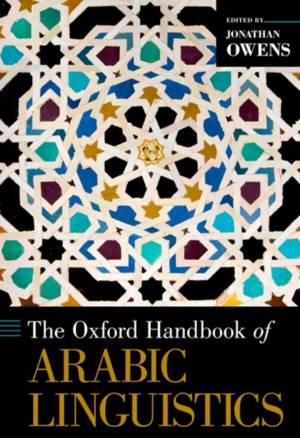
Bedankt voor het vertrouwen het afgelopen jaar! Om jou te bedanken bieden we GRATIS verzending aan op alles gedurende de hele maand januari.
- Afhalen na 1 uur in een winkel met voorraad
- Gratis thuislevering in België
- Ruim aanbod met 7 miljoen producten
Bedankt voor het vertrouwen het afgelopen jaar! Om jou te bedanken bieden we GRATIS verzending aan op alles gedurende de hele maand januari.
- Afhalen na 1 uur in een winkel met voorraad
- Gratis thuislevering in België
- Ruim aanbod met 7 miljoen producten
Zoeken
€ 65,95
+ 131 punten
Omschrijving
Arabic is one of the world's largest languages, spoken natively by nearly 300 million people. By strength of numbers alone Arabic is one of our most important languages, studied by scholars across many different academic fields and cultural settings. It is, however, a complex language rooted in its own tradition of scholarship, constituted of varieties each imbued with unique cultural values and characteristic linguistic properties. Understanding its linguistics holistically is therefore a challenge. The Oxford Handbook of Arabic Linguistics is a comprehensive, one-volume guide that deals with all major research domains which have been developed within Arabic linguistics. Chapters are written by leading experts in the field, who both present state-of-the-art overviews and develop their own critical perspectives. The Handbook begins with Arabic in its Semitic setting and ends with the modern dialects; it ranges across the traditional--the classical Arabic grammatical and lexicographical traditions--to the contemporary--Arabic sociolinguistics, Creole varieties and codeswitching, psycholinguistics, and Arabic as a second language - while situating Arabic within current phonetic, phonological, morphological, syntactic and lexicological theory. An essential reference work for anyone working within Arabic linguistics, the book brings together different approaches and scholarly traditions, and provides analysis of current trends and directions for future research.
Specificaties
Betrokkenen
- Auteur(s):
- Uitgeverij:
Inhoud
- Aantal bladzijden:
- 624
- Taal:
- Engels
- Reeks:
Eigenschappen
- Productcode (EAN):
- 9780190912802
- Verschijningsdatum:
- 1/06/2019
- Uitvoering:
- Paperback
- Formaat:
- Trade paperback (VS)
- Afmetingen:
- 168 mm x 241 mm
- Gewicht:
- 1088 g

Alleen bij Standaard Boekhandel
+ 131 punten op je klantenkaart van Standaard Boekhandel
Beoordelingen
We publiceren alleen reviews die voldoen aan de voorwaarden voor reviews. Bekijk onze voorwaarden voor reviews.












